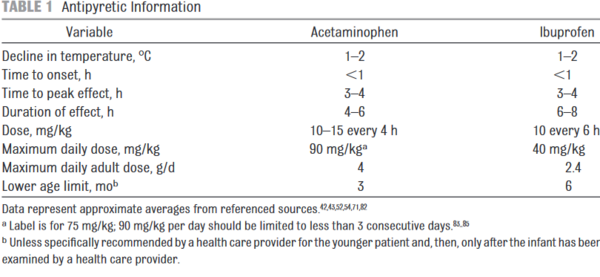Background: Febrile seizures occurring in a child older than one month during an episode of fever affect 2% to 4% of children in Great Britain and the United States and recur in 30%. Rapid‐acting antiepileptics and antipyretics given during subsequent fever episodes have been used to avoid the adverse effects of continuous antiepileptic drugs.
Objectives: To evaluate primarily the effectiveness and safety of antiepileptic and antipyretic drugs used prophylactically to treat children with febrile seizures; but also to evaluate any other drug intervention where there was a sound biological rationale for its use.
Search methods: We searched the Cochrane Central Register of Controlled Trials (CENTRAL) (The Cochrane Library 2016, Issue 7); MEDLINE (1966 to July 2016); Embase (1966 to July 2016); Database of Abstracts of Reviews of Effectiveness (DARE) (July 2016). We imposed no language restrictions. We also contacted researchers in the field to identify continuing or unpublished studies.
Selection criteria: Trials using randomised or quasi‐randomised participant allocation that compared the use of antiepileptic, antipyretic or other plausible agents with each other, placebo or no treatment.
Data collection and analysis: Two review authors (RN and MO) independently applied predefined criteria to select trials for inclusion and extracted the predefined relevant data, recording methods for randomisation, blinding and exclusions. For the 2016 update a third author (MC) checked all original inclusions, data analyses, and updated the search. Outcomes assessed were seizure recurrence at 6, 12, 18, 24, 36, and 48 months and at age 5 to 6 years in the intervention and non‐intervention groups, and adverse medication effects. We assessed the presence of publication bias using funnel plots.
Main results: We included 40 articles describing 30 randomised trials with 4256 randomised participants. We analysed 13 interventions of continuous or intermittent prophylaxis and their control treatments. Methodological quality was moderate to poor in most studies. We found no significant benefit for intermittent phenobarbitone, phenytoin, valproate, pyridoxine, ibuprofen or zinc sulfate versus placebo or no treatment; nor for diclofenac versus placebo followed by ibuprofen, acetaminophen or placebo; nor for continuous phenobarbitone versus diazepam, intermittent rectal diazepam versus intermittent valproate, or oral diazepam versus clobazam.
There was a significant reduction of recurrent febrile seizures with intermittent diazepam versus placebo or no treatment, with a risk ratio (RR) of 0.64 (95% confidence interval (CI) 0.48 to 0.85 at six months), RR of 0.69 (95% CI 0.56 to 0.84) at 12 months, RR 0.37 (95% CI 0.23 to 0.60) at 18 months, RR 0.73 (95% CI 0.56 to 0.95) at 24 months, RR 0.58 (95% CI 0.40 to 0.85) at 36 months, RR 0.36 (95% CI 0.15 to 0.89) at 48 months, with no benefit at 60 to 72 months. Phenobarbitone versus placebo or no treatment reduced seizures at 6, 12 and 24 months but not at 18 or 72 month follow‐up (RR 0.59 (95% CI 0.42 to 0.83) at 6 months; RR 0.54 (95% CI 0.42 to 0.70) at 12 months; and RR 0.69 (95% CI 0.53 to 0.89) at 24 months). Intermittent clobazam compared to placebo at six months resulted in a RR of 0.36 (95% CI 0.20 to 0.64), an effect found against an extremely high (83.3%) recurrence rate in the controls, which is a result that needs replication.
The recording of adverse effects was variable. Lower comprehension scores in phenobarbitone‐treated children were found in two studies. In general, adverse effects were recorded in up to 30% of children in the phenobarbitone‐treated group and in up to 36% in benzodiazepine‐treated groups. We found evidence of publication bias in the meta‐analyses of comparisons for phenobarbitone versus placebo (eight studies) at 12 months but not at six months (six studies); and valproate versus placebo (four studies) at 12 months, with too few studies to identify publication bias for the other comparisons.
Most of the reviewed antiepileptic drug trials are of a methodological quality graded as low or very low. Methods of randomisation and allocation concealment often do not meet current standards; and treatment versus no treatment is more commonly seen than treatment versus placebo, leading to obvious risks of bias. Trials of antipyretics and zinc were of higher quality.
Authors' conclusions: We found reduced recurrence rates for children with febrile seizures for intermittent diazepam and continuous phenobarbitone, with adverse effects in up to 30%. Apparent benefit for clobazam treatment in one trial needs to be replicated to be judged reliable. Given the benign nature of recurrent febrile seizures, and the high prevalence of adverse effects of these drugs, parents and families should be supported with adequate contact details of medical services and information on recurrence, first aid management and, most importantly, the benign nature of the phenomenon.
Source: Offringa M, Newton R, Cozijnsen MA, Nevitt SJ. Prophylactic drug management for febrile seizures in children. Cochrane Database Syst Rev. 2017;2(2):CD003031. Published 2017 Feb 22. doi:10.1002/14651858.CD003031.pub3 (frei zugänglich)
![[Translate to English:] Überlebensgrafik je Temperatur](/fileadmin/_processed_/4/e/csm_Eidechsenueberleben_c5e9436d5e.png)
![[Translate to English:] Wiederauftreten von Fieberkrampf in der Kontrollgruppe je Alter](/fileadmin/_processed_/6/4/csm_SeizureRecurrenceControls_f7bdb9a28e.png)
![[Translate to English:] Schaubild der Gefühle](/fileadmin/_processed_/7/f/csm_ijerph-16-02959-g002-550_ac2080bac6.jpg)
